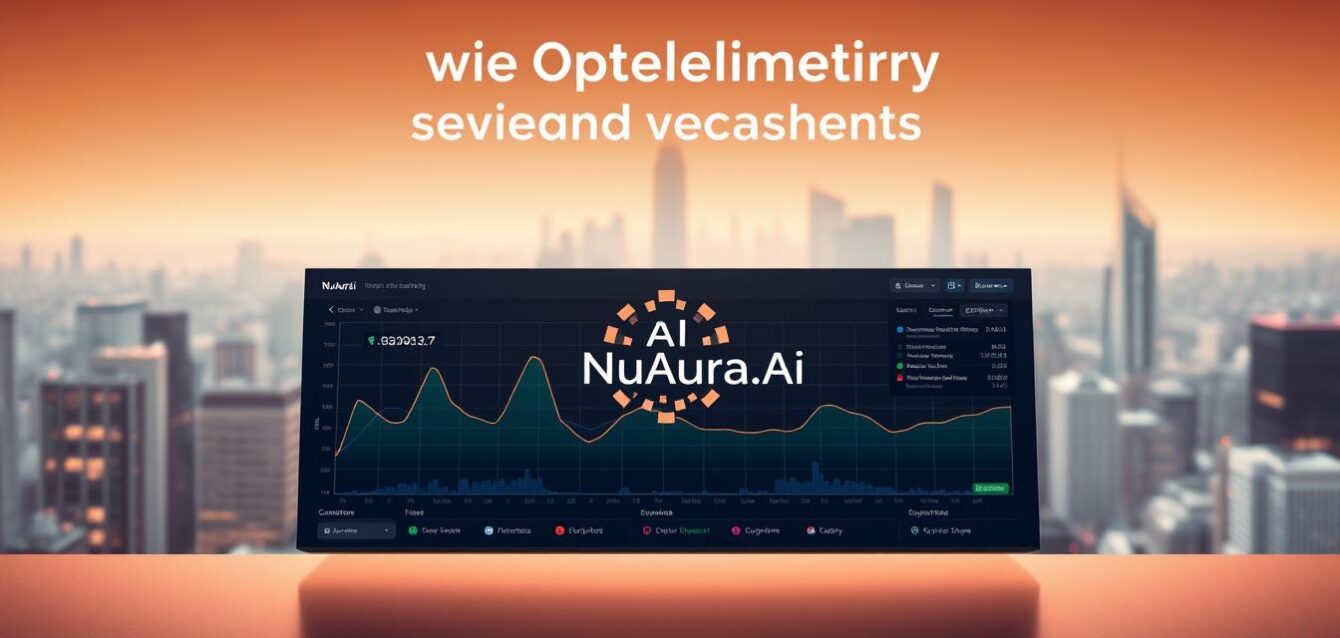An astonishing 82% of enterprises struggle with complex system monitoring. OpenTelemetry integration is a key breakthrough in modern observability strategies. It helps organizations understand their technological infrastructure better.
OpenTelemetry is a revolutionary way to understand complex digital ecosystems. It offers a unified framework for generating standardized telemetry data. This powerful solution gives development teams deep insights into system performance and application behavior.
Modern businesses need comprehensive visibility across their technological landscapes. OpenTelemetry integration meets this need by offering a seamless way to collect, process, and analyze performance metrics. It works across multiple services and programming environments.
Key Takeaways
- OpenTelemetry provides a standardized approach to observability
- Enables comprehensive distributed tracing across complex systems
- Minimizes instrumentation overhead for development teams
- Supports multiple programming languages and frameworks
- Facilitates more efficient troubleshooting and performance monitoring
What is OpenTelemetry and Why is It Important?
In today’s fast-changing world of cloud-native apps, seeing how things work is key. OpenTelemetry is a big help, making it easier to understand how systems perform and act in complex digital spaces.
OpenTelemetry is a new way to track and study data in systems. It’s open source and works with all kinds of systems, making it easier to monitor them.
Overview of OpenTelemetry
OpenTelemetry is a new tool for making software easier to watch. It helps developers by giving them a clear way to:
- Collect performance metrics
- Capture distributed traces
- Generate consistent logging data
Key Features and Benefits
This tool brings big benefits for cloud apps:
- Automatic Instrumentation: Saves time by coding less
- Works well with many backends
- Gives a full view of all tech stacks
The Role of OpenTelemetry in Observability
OpenTelemetry breaks down old walls between monitoring tools. It lets teams see how systems work better, fix problems faster, and make smarter choices.
OpenTelemetry makes watching systems easier and more connected.
Key Components of OpenTelemetry Integration
OpenTelemetry makes systems observable by using three key parts. These parts work together to give deep insights into complex systems. Tracing, metrics, and logs are the base of good monitoring tools for cloud apps.
Tracing: Understanding System Performance
Distributed tracing lets developers follow requests through different services. It shows how requests move and where they slow down. This helps teams find and fix performance issues.
- Visualize request flows across multiple services
- Detect latency and performance issues
- Understand service dependencies
Metrics: Monitoring Application Health
Metrics give numbers on how well a system is doing. They let teams watch cloud apps in real-time. These numbers help spot problems early, before they affect users.
| Metric Type | Purpose | Key Indicators |
|---|---|---|
| Resource Utilization | Track system resource consumption | CPU, Memory, Network |
| Performance Metrics | Measure application responsiveness | Request rates, response times |
| Error Tracking | Monitor system reliability | Error rates, exception counts |
Logs: Detailed Insights into Systems
Logs record detailed, timed events. They give contextual information about system actions. In OpenTelemetry, logs help with debugging and fixing problems in distributed systems.
- Record detailed event sequences
- Support root cause analysis
- Provide comprehensive system diagnostic information
Steps for Implementing OpenTelemetry Integration
Starting OpenTelemetry integration needs a solid plan to boost your team’s ability to see what’s happening in your systems. You’ll need to plan well, pick the right tools, and set up your monitoring to get all the system insights you need.
Assessing Current Observability Practices
First, you must check how well your current monitoring tools and practices are working. This step is key to finding out what’s missing in your observability strategy.
- Evaluate current instrumentation libraries
- Analyze existing monitoring tools performance
- Identify performance and visibility limitations
Choosing the Right OpenTelemetry SDK
Picking the right OpenTelemetry SDK is vital for a smooth integration. Each programming language and environment needs a specific way to add instrumentation.
| Programming Language | Recommended SDK | Ease of Integration |
|---|---|---|
| Python | OpenTelemetry Python SDK | High |
| Java | OpenTelemetry Java SDK | Medium |
| JavaScript | OpenTelemetry JS SDK | High |
Configuring OpenTelemetry for Your Environment
Configuring OpenTelemetry means setting up libraries for instrumentation and deciding how to send out telemetry data. Getting this right ensures you collect and analyze data smoothly with different monitoring tools.
- Install core OpenTelemetry packages
- Configure instrumentation libraries
- Set up data exporters
- Define tracing and metrics parameters
OpenTelemetry integration really changes how you see your systems. It gives you detailed, standard telemetry insights.
Best Practices for OpenTelemetry Integration
Using OpenTelemetry needs careful planning to get the most out of cloud-native apps. Companies using open standards must create strong plans for tracking data. This helps them get useful insights from complex systems.
Standardizing Instrumentation Across Services
It’s key to have the same way of tracking in distributed systems. Teams should make rules for:
- Uniform naming for spans and traces
- Standard metadata collection
- Consistent attribute tagging
Ensuring Data Accuracy and Consistency
Good telemetry relies on accurate data. Important steps include:
- Comprehensive error tracking
- Granular performance metrics
- Automated checks for data quality
Regularly Updating OpenTelemetry Tools
Keeping up with OpenTelemetry updates is vital. It helps teams use the latest tools and features. This keeps their systems running smoothly with new cloud tech.
Good observability needs ongoing improvement and sticking to best practices.
Common Challenges in OpenTelemetry Integration
Using OpenTelemetry in complex systems is tough for companies wanting good observability. Teams face many challenges that need smart solutions for smooth integration and top performance.
Integration with Existing Monitoring Tools
Linking OpenTelemetry with current tools needs careful planning. Companies must deal with compatibility and keep data consistent across platforms. Important steps include:
- Identifying compatibility requirements
- Evaluating data transformation needs
- Selecting flexible distributed tracing solutions
- Ensuring smooth metrics collection processes
Handling Performance Overhead
Performance is a big worry when using OpenTelemetry. Adding instrumentation can use up system resources, needing smart tweaks. Developers must find a balance between detailed monitoring and not slowing down the system.
- Implement intelligent sampling strategies
- Configure lightweight instrumentation
- Monitor resource consumption
- Select efficient telemetry collection mechanisms
Ensuring Data Security and Compliance
Keeping data safe is key when setting up observability tools. Companies must create strong systems to protect data while still getting full system insights.
- Implement encryption protocols
- Define strict access controls
- Anonymize potentially sensitive telemetry data
- Align with industry compliance standards
The OpenTelemetry Collector is key in tackling these issues. It acts as a central hub for handling and directing telemetry data.
Real-World Use Cases of OpenTelemetry
OpenTelemetry is changing how companies see their cloud apps and microservices. It gives teams deep insights into how systems perform. This is thanks to its detailed tracing features.
Enhancing Microservices Observability
Today’s cloud apps use many microservices to be flexible and scalable. OpenTelemetry helps track how these services talk to each other. It gives a clear view of the whole system.
- Seamless request tracking across distributed systems
- Detailed performance monitoring of individual microservices
- Comprehensive visualization of service dependencies
Improving Debugging Processes
Debugging big systems is hard. OpenTelemetry makes it easier by giving contextual information about system interactions and bottlenecks.
- Rapid identification of performance issues
- Precise error tracking across service boundaries
- Detailed insights into request lifecycles
Leveraging OpenTelemetry in Cloud Environments
Clouds need strong observability tools. OpenTelemetry works well with Kubernetes and other cloud tech. It helps companies watch and improve their cloud setup.
OpenTelemetry represents a paradigm shift in understanding complex distributed systems.
OpenTelemetry offers a standard way to collect telemetry data. It helps teams make smart choices and keep apps running smoothly in the cloud.
Future Trends in OpenTelemetry Development
The world of observability is changing fast, with OpenTelemetry leading the way. It’s becoming key for cloud-native apps. More companies want standards that work for everyone, and OpenTelemetry is helping make that happen.
New tech is changing how OpenTelemetry works. Edge computing and serverless tech bring new challenges and chances. Developers are working on making tools that work well with these new systems without slowing things down.
The future of OpenTelemetry depends on the community working together. Open source lets experts from all over help improve it. This way, everyone can keep up with new tech and understand their systems better.
Investing in OpenTelemetry is changing IT operations. It’s making monitoring smarter and more connected. Teams will get better insights and tools that work well together.
FAQ
What exactly is OpenTelemetry?
OpenTelemetry is a free, open-source tool for watching how systems work. It helps developers collect and manage data from different parts of a system. This way, they can see how everything works together.
How does OpenTelemetry differ from traditional monitoring tools?
OpenTelemetry is different because it doesn’t favor any one company. It has tools for many programming languages and lets you send data to various places. This makes it easy to use without getting stuck with one company’s tools.
What are the primary components of OpenTelemetry?
OpenTelemetry has three main parts: tracing, metrics, and logs. Tracing shows how requests move through a system. Metrics measure how well things are working. Logs record important events. Together, they give a full picture of system performance.
Is OpenTelemetry suitable for microservices architectures?
Yes, OpenTelemetry is great for complex systems. It helps see how requests move through many services. This makes it easier to understand and improve cloud-native apps.
How complex is OpenTelemetry implementation?
OpenTelemetry needs some tech know-how, but it’s doable. You can start small and grow your use of it. It has lots of help, including guides and a community of users.
What programming languages support OpenTelemetry?
OpenTelemetry works with many languages like Java, Python, and Go. This makes it flexible for different projects and teams.
How does OpenTelemetry handle performance overhead?
OpenTelemetry is made to not slow things down too much. It uses smart ways to collect data and has options to control how much data is gathered. This helps keep things running smoothly.
Can OpenTelemetry integrate with existing monitoring tools?
Yes, OpenTelemetry works well with tools like Prometheus and Grafana. Its design makes it easy to send data to different places for analysis.
What are the security considerations for OpenTelemetry?
OpenTelemetry has strong security features like encryption and controls for data. It also lets you choose what data to send and how to protect it. This helps keep sensitive info safe.
Is OpenTelemetry free to use?
Yes, OpenTelemetry is free under the Apache 2.0 license. This means you can use, change, and share it without paying extra. It’s a good choice for keeping an eye on your systems.




